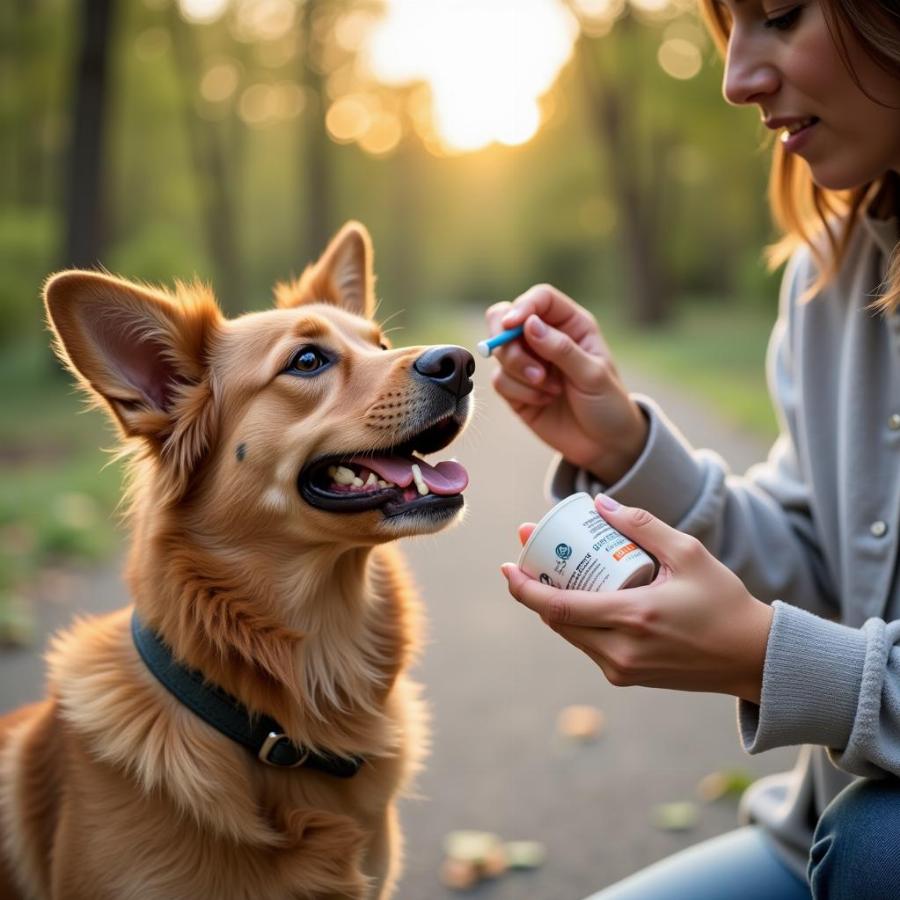Antirobe, also known as clindamycin, is an antibiotic sometimes prescribed for dogs to treat bacterial infections. Understanding its uses, benefits, risks, and proper administration is crucial for responsible pet ownership. This guide delves into everything you need to know about antirobe for dogs, ensuring you can make informed decisions regarding your furry friend’s health.
Understanding Antirobe and its Uses in Dogs
Antirobe is effective against various bacterial infections affecting dogs, including skin infections, bone infections, dental infections, and abscesses. It works by inhibiting bacterial protein synthesis, effectively stopping the infection from spreading and allowing the body’s immune system to eliminate the bacteria. Your veterinarian might prescribe Antirobe if your dog is suffering from a bacterial infection that isn’t responding to other antibiotics.
Administering Antirobe to Your Dog
Antirobe is available in both capsule and liquid forms. Always follow your veterinarian’s instructions regarding dosage and frequency. Never adjust the dosage yourself, as this can lead to adverse effects. Typically, the medication is given orally, with or without food. If your dog vomits shortly after receiving the medication, consult your veterinarian. They may advise re-administering the dose or suggest alternative administration methods.
Potential Side Effects and Precautions
While generally safe, Antirobe can cause side effects in some dogs, such as vomiting, diarrhea, loss of appetite, and allergic reactions. If you observe any of these symptoms, contact your veterinarian immediately. Inform your veterinarian about any other medications your dog is currently taking, as interactions can occur. Pregnant or lactating dogs should only receive Antirobe under strict veterinary supervision.
 Dog Receiving Antirobe Medication
Dog Receiving Antirobe Medication
When to Call Your Vet
While some mild side effects like soft stool can occur, other more serious side effects require immediate veterinary attention. These include bloody diarrhea, severe vomiting, jaundice (yellowing of the skin and gums), loss of coordination, or seizures. Prompt veterinary intervention is crucial in such cases.
The Importance of Completing the Full Course of Antibiotics
Even if your dog’s symptoms improve before the prescribed course of Antirobe is finished, it’s crucial to administer the entire prescribed dosage. Stopping the medication prematurely can lead to antibiotic resistance, making future infections more difficult to treat.
Conclusion
Antirobe can be an effective treatment for bacterial infections in dogs when administered correctly under veterinary guidance. Understanding the uses, potential side effects, and proper administration of this medication is vital for responsible pet ownership. Always consult your veterinarian before administering any medication to your dog and follow their instructions carefully.
FAQ:
- Can I give my dog Antirobe for a viral infection? No, Antirobe is only effective against bacterial infections.
- What should I do if my dog misses a dose? Give the missed dose as soon as you remember, unless it’s almost time for the next dose. Do not double up on doses.
- Can Antirobe be given with food? Yes, Antirobe can be given with or without food.
- How long does it take for Antirobe to start working? You may start to see improvement in your dog’s condition within a few days, but it’s important to complete the entire course of antibiotics.
- Can Antirobe cause allergic reactions in dogs? Yes, allergic reactions are a possible side effect of Antirobe. Contact your veterinarian immediately if you observe signs of an allergic reaction, such as hives, swelling, or difficulty breathing.
- Is Antirobe safe for all breeds of dogs? Generally, yes, but consult your veterinarian as certain breeds might have specific sensitivities.
- What should I do if my dog experiences side effects? Contact your veterinarian immediately if your dog experiences any side effects, especially severe ones.